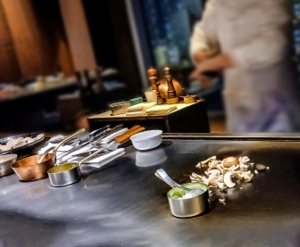Japanese cuisine … grilled steaks, king prawns, veggies, noodles, rice … flat plate BBQ … tastefully prepared and cooked by skilled chefs …
At times, chefs’ performance overshadows cuisine itself; but discerning diners appreciate both delicate, skilled preparation of ingredients and joy of savouring Japanese delights cooked over hot plate.

Origin of Teppanyaki
Began around 200 years ago … with meals prepared on small grill by families. First teppanyaki restaurant originated from Shigeji Fujioka of Japanese chain restaurant, Misono in Kobe … Western-influenced style of presentation in 1945, post-World War II. Very popular with foreigners, tourists, not so with locals.
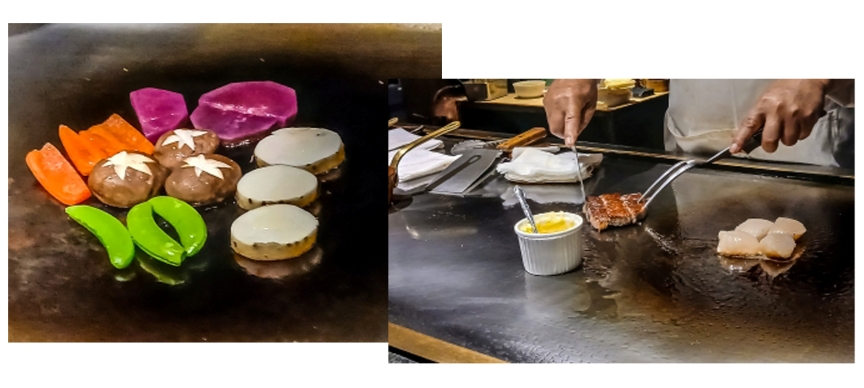
Teppanyaki ingredients
Western style teppanyaki typically uses beef, prawns, scallops, fish, lobster, chicken, assorted vegetables. Japanese-style teppanyaki may also include noodles (yakisoba) cabbage with sliced meat or seafood (okonomiyaki) cooked with vegetable oil and animal fat combination.
Usually, Kobe or Wagyu beef is used in Japan, but other choice beef cuts may be used in other countries.
Side dishes include mung bean sprouts, zucchini and fried rice.
Dipping sauces with soy sauce, vinegar, pepper, salt, garlic and wine may be offered, but in Japan only soy sauce is typically offered.

Teppanyaki today
Today, teppanyaki dining is globally recognized with accompanied culinary art form … interactive dining experience with skilled chefs and diverse menu options.
Certainly, acts as restaurant drawcard for diners !
Combination of eastern flavours … western side dishes … ancient Japanese cooking techniques with modern performance art.
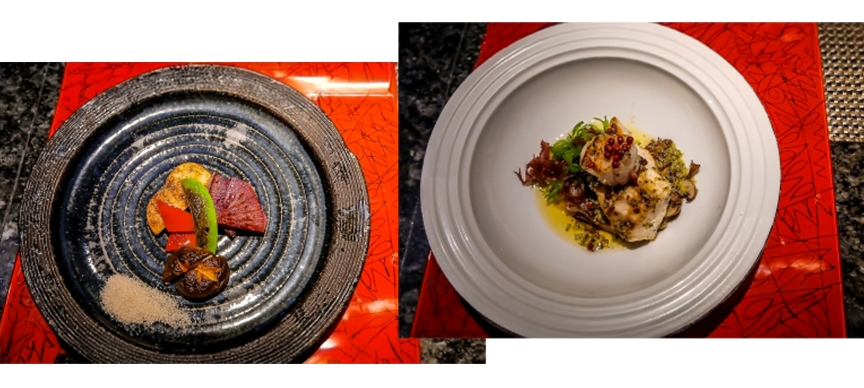
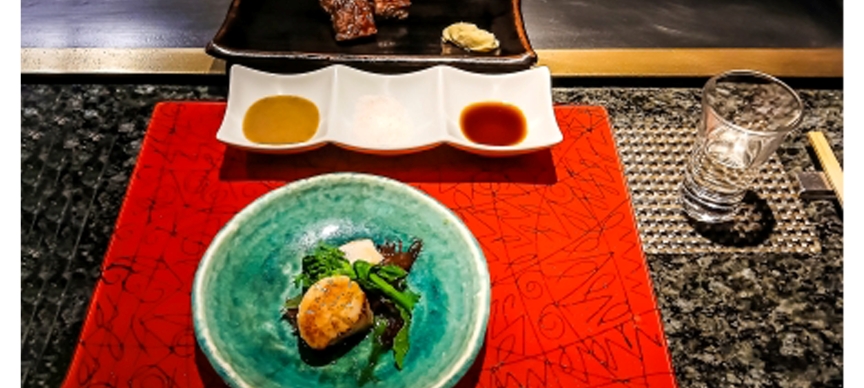
How to order Teppanyaki
Best part of teppanyaki is complete flexibility of choice – you order what dishes you like, request chef on how you want it cooked – rare, medium-rare meats … type of seasoning desired … oil or butter mixture content … type of seafood preferred.
You will definitely be happy with outcome based on your favoured selections !
You can also select your sauces – soy sauce, sesame oil, mirin, sake with garlic, ginger and sesame seeds. Again, choice is completely yours !
Beef may be thinly sliced or thick (1-2cm) sliced; chicken – sliced and seasoned; freshest king prawns, scallops, fish, lobster either halved or whole, sliced pork; tofu, onions, mushrooms (Shitake, enoki or other varieties), bean sprouts, peppers (red or green), asparagus, zucchini or any seasonal vegetables for vegetarian options.
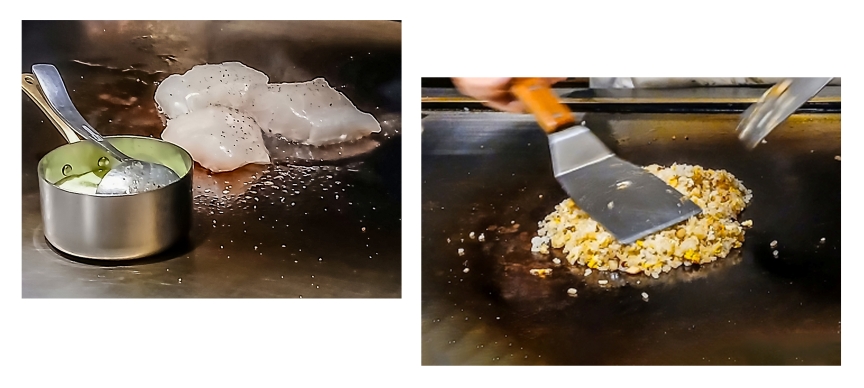
Seasoning, dipping sauces side dishes
Seasoning and dipping sauces usually include soy sauce, sesame oil, mirin (sweet rice wine), garlic and ginger, and toasted sesame seeds.
Added side dish is fried rice or noodles cooked with egg and veggies, lemon juice, chilli flakes, mustard may be added to customize sauce for individual taste.
Cooking sauces – some typical cooking sauces used are Yakiniku (Japanese BBQ) sauce, ginger sauce, garlic-butter sauce – usually combination of sweet, spicy and salty flavours.
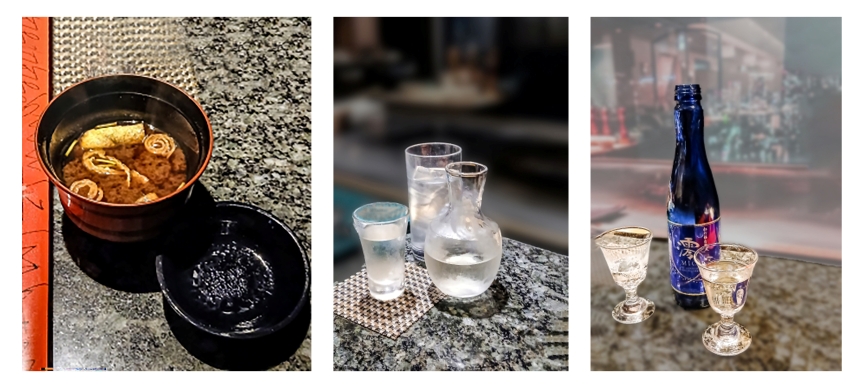
Sake
Don’t forget to sample Sake (Japanese rice wine) to accompany your teppanyaki dinner … may be served warm or chilled.
There is also a sparkling sake – to be sampled ! Most unique and refreshing taste !
Conclusion

There is always something for everyone in teppanyaki dining – meats, seafood preferences … vegans or vegetarian options … choice is endless.
All preferences are catered for, your preferred selections and freshest ingredients presented to you before cooking commences …
Dining experience extraordinaire !
You can find teppanyaki restaurants everywhere these days … try it if you want a taste of Japan without going there.
Then again, to experience teppanyaki dining in Japan is definitely a memorable experience to be cherished !
